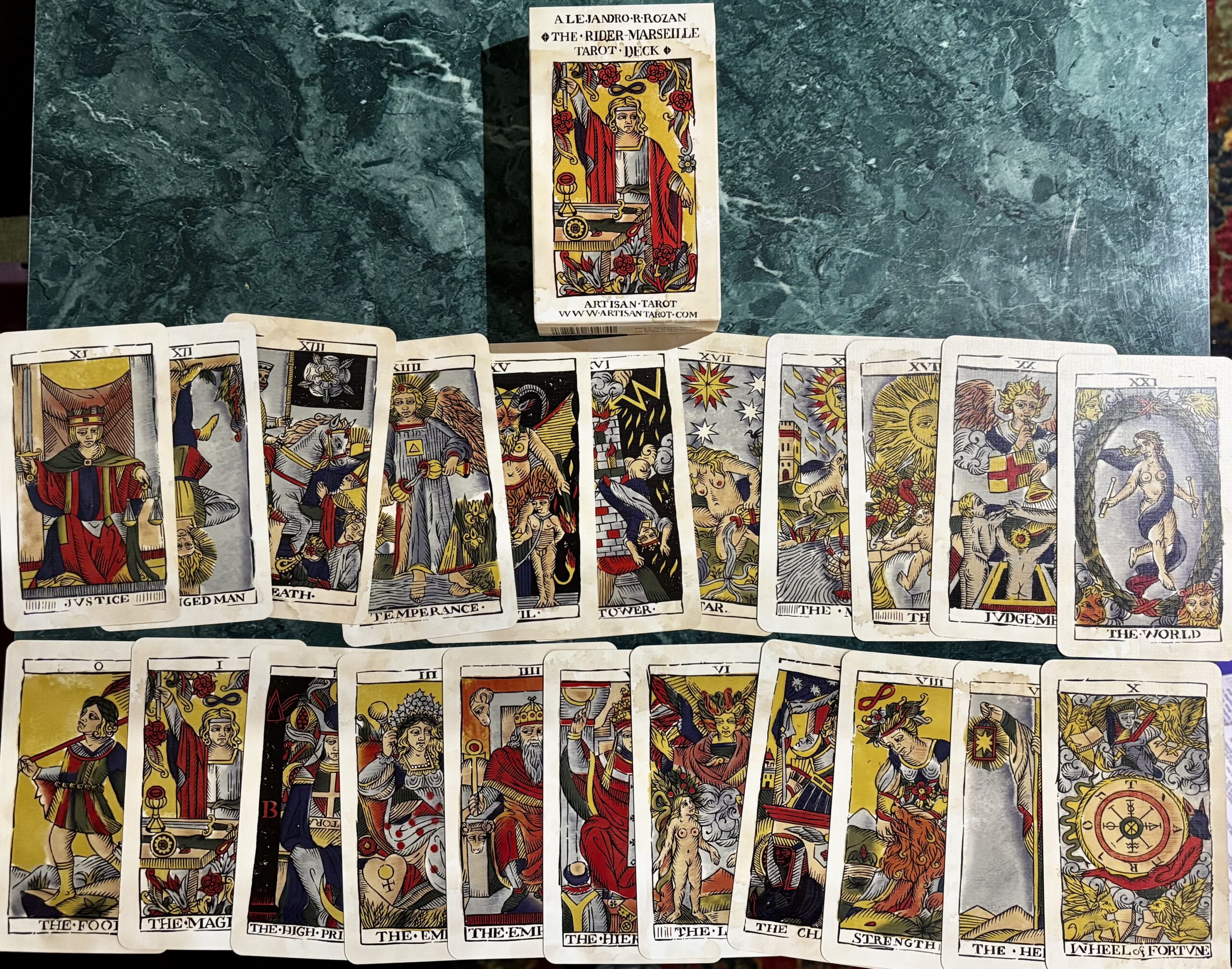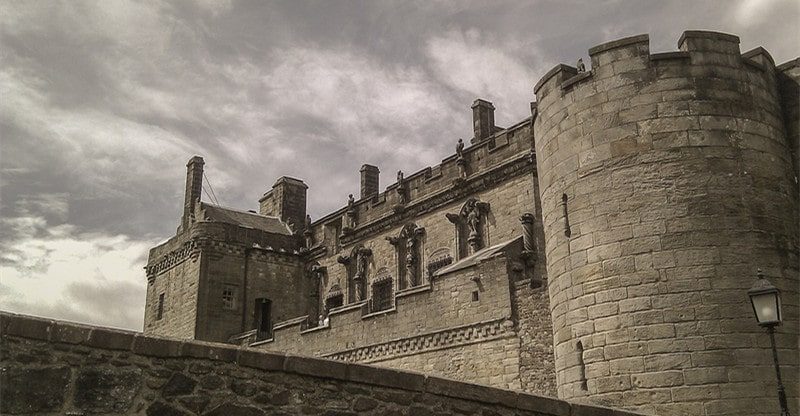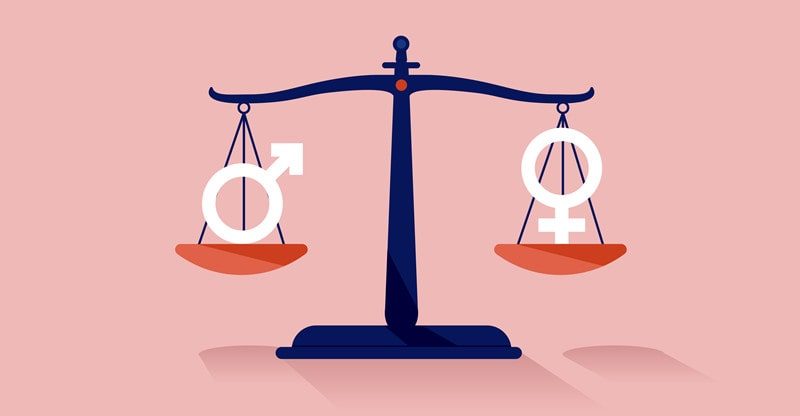The Oedipus cycle stands as one of the most profound stories in Greek tragedy. When viewed through the lens of Tarot’s Major Arcana, we can see the universal human experiences and archetypal power of the Collective Unconscious embedded in this ancient tale. This analysis not only reveals the deep connections between Tarot and classical mythology but also demonstrates the nuanced evolution of fate, self-knowledge, and transcendence in Greek thought.
The Oedipus Cycle: A Journey Through the Major Arcana
0. The Fool – Oedipus’s Departure
Oedipus, in an attempt to escape a dire prophecy, leaves Corinth, perfectly embodying the Fool’s archetype of embarking on a journey into the unknown, driven by a desire to outmaneuver fate. This moment is filled with innocence and courage, yet also contains the irony of destiny, as this very decision enables the prophecy to be fulfilled.
Oedipus Rex
The first four cards represent Oedipus’ two sets of parents, a motif that appears frequently in world myths:
1. The Magician & 2. The High Priestess – The Dual Parentage
The Magician (Laius) & The High Priestess (Jocasta) – his biological parents. They are predestined to set the prophecy in motion when they abandon Oedipus to die on a mountain to avoid the Oracle of Delphi’s prophecy that he would kill his father and marry his mother. Laius represents authority and the initial attempt to defy fate by abandoning his son.
3. The Empress & 4. The Emperor – Adoptive Parents
The Empress (Merope) & The Emperor (Polybus) – his adoptive parents. The rulers of Corinth provide him with a false sense of security and identity until Oedipus goes to the Oracle at Delphi, learns of the prophecy, and believes it is about his adoptive parents.
5. The Hierophant – The Oracle at Delphi
The Oracle embodies the divine messenger, delivering the prophecy that dictates Oedipus’s destiny. This card symbolizes divine wisdom and tradition, but also hints at the tragedy that can result from human misinterpretation of divine messages.
6. The Lovers – The Prophecy of Patricide and Incest
Oedipus makes the choice to leave the only parents he knows to avoid this path. The union, unbeknownst to them, as mother and son, reflects both the Lovers’ themes of choices, and the intertwining of destinies. This fated connection illustrates the complexity of human choice and the inevitability of destiny.
7. The Chariot – Oedipus at the Crossroads and his Triumph over the Sphinx
Oedipus comes to a crossroads in his chariot and finds an old man blocking his way. They fight and he kills the old man (unknowingly his biological father Laius). Oedipus continues on, arriving at a distant country where he is confronted by a Sphinx who demands to know the answer to a riddle: What walks on four legs in the morning, two legs at noon, and three legs at night? The answer is, man.The Chariot card symbolizes victory and determination, but also suggests that Oedipus has unknowingly begun to fulfill the first part of the prophecy.
8. Strength – Oedipus’ Courage and Jocasta’s Resilience
Oedipus’ correct answer defeats the Sphinx, and he is awarded the recently widowed Queen of Thebes as his wife. As the truth of who killed the former king begins to unfold, Oedipus courageously swears an oath to bring the murderer to justice. Jocasta attempts to calm Oedipus, hoping to maintain stability and suppress the emerging truths. This highlights her inner strength and determination.The Strength card represents not just physical power but inner courage and resilience in the face of adversity.
9. The Hermit – Tiresias
The blind prophet represents introspection and inner wisdom, leading first through warnings and insights not to ask more, which Oedipus rejects. Oedipus faces the truth that Tiresias has finally brought to light.The Hermit card symbolizes wisdom and guidance, with Tiresias serving as the keeper of truth who guides Oedipus on his painful journey of self-discovery.
10. Wheel of Fortune – The Unfolding of Fate
The inevitable coming revelation of Oedipus’s true identity and the fulfillment of the prophecy illustrate the Wheel’s turning and the inescapable nature of destiny. This card reminds us that no matter how we strive, some events seem destined to occur.
11. Justice – The Revelation
The uncovering of the truth brings about a reckoning, as Oedipus insists on uncovering the truth about his past, uphold society’s laws and promises to accept the consequences, so the cosmic order can be restored.The Justice card symbolizes truth, balance, and karma, which in Oedipus’s story is achieved through the painful revelation of truth and subsequent self-punishment.
12. The Hanged Man – Jocasta’s Demise
Overwhelmed by the revealed truths, Jocasta takes her own life by hanging, symbolizing surrender and the suspension between life and death. The Hanged Man card represents sacrifice and new perspective, with Jocasta’s death being the ultimate surrender to unbearable truth.
13. Death – Oedipus’s Transformation
Upon discovering his sins and Jocasta’s death, Oedipus blinds himself and undergoes a profound transformation, marking the end of his former identity. The Death card is not physical death but symbolizes transformation and the possibility of rebirth.
Oedipus at Colonus
14. Temperance – Oedipus’s Exile and Acceptance
In accepting his fate, Oedipus reaches a new state of grace, shown in another prophecy that the city who possesses Oedipus’s corpse will be blessed by it. Before he dies, Oedipus attains a state of balance and acceptance, harmonizing his past actions with his newfound understanding.The Temperance card symbolizes balance, harmony, and inner peace, which Oedipus finds in his exile as he accepts his fate.
15. The Devil – Creon’s Ambition
Creon, Oedipus’ uncle/brother-in-law, takes over Thebes. Through his manipulation and desire for power he reflects the Devil’s themes of bondage and materialism. The Devil card warns of the dangers of power, control, and material desire.
16. The Tower – Thebes’s Turmoil
The ensuing chaos and destruction in Thebes, involving the death of two of Oedipus’ sons, is seen in the Tower’s sudden upheaval and the breakdown of false structures. The Tower card represents sudden change and revelation, often bringing new awareness through destructive events.
Antigone
17. The Star – Antigone’s Devotion
Antigone, Oedipus’s daughter, embodies hope and unwavering faith in the gods as she seeks to honor her brother with a proper burial, adhering to divine laws and rituals over human edicts.The Star card symbolizes hope, faith, and spiritual guidance, qualities that Antigone’s actions demonstrate even in the face of dire consequences.
18. The Moon – Creon’s Deception
Creon’s deceitful actions and the ensuing confusion when Antigone is condemned to be buried alive, causes Creon’s son to kill himself, align with the Moon’s themes of illusion and uncertainty. The Moon card reveals hidden fears and deception, manifested through Creon’s actions.
19. The Sun – Antigone’s Revelation
Antigone’s defiance and commitment to the laws of the gods suggests there are standards for right and wrong that are more fundamental and universal than the laws of any particular society, and will bring harmony if followed.The Sun card symbolizes truth, clarity, and revelation, with Antigone’s actions bringing moral clarity and the light of higher truth to the story.
20. Judgment – The Aftermath
The deaths of Antigone, her fiance, Haemon, and Creon’s wife, Eurydice, serve as a divine judgment upon Creon for his refusal to honor the laws of the Gods and bury his nephew, rather than sticking to his man-made laws that deemed Polynices a traitor. Realization of the tragedy in this, especially for the Chorus (citizens of Thebes), prompts the possibility of redemption for the citizens and playgoers.The Judgment card represents awakening, renewal, and final reckoning, embodied in these deaths and the subsequent realizations.
21a. The World – Tiresias’s Wisdom
Tiresias, having experienced life as both man and woman (a hermaphrodite), represents the culmination of knowledge and the unity of opposites, embodying the World card’s themes of completion and integration.
21b. The World (Apotheosis of Oedipus) – Transcendence
Oedipus at Colonus, was Sophocles last play, even though Antigone follows in the story timeline. At his death, Oedipus achieves apotheosis, transcending his mortal suffering and the constraints of fate, symbolizing a new understanding of human potential and the possibility of rising above predetermined destiny.The World card represents completion, integration, and full understanding, with Oedipus’s apotheosis being the final completion of his journey, transcending human limitations.
Conclusion: The Dialectic of Fate and Free Will
This narrative arc not only aligns the Oedipus myth with the Tarot’s Major Arcana but also reflects a shift in classical Greek thought—from viewing fate as an unalterable force to considering the potential for human beings to transcend their destinies through self-awareness and transformation.The story of Oedipus reminds us that even in the face of the harshest destiny, humans retain the capacity to transcend through acceptance, understanding, and transformation. The Major Arcana of the Tarot, as an archetypal map of human experience, provides us with a framework to understand this profound psychological and spiritual journey.In our own lives, we may find ourselves in similar archetypal positions—facing seemingly inevitable challenges, making difficult choices, experiencing painful revelations of truth, and ultimately seeking reconciliation and transcendence. By recognizing these patterns, we can navigate our own hero’s journey more consciously, perhaps finding freedom within the constraints of destiny.



